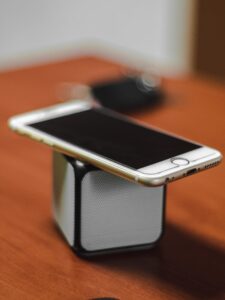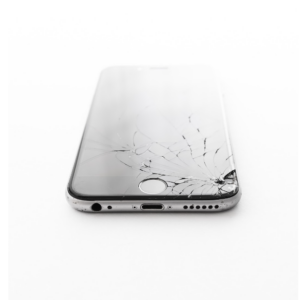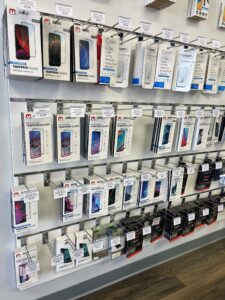
The screen of your smartphone or tablet is one of the most important parts of the device. It is the interface through which you interact with the device, and it is also one of the most vulnerable parts. A single drop or scratch can damage the screen, and repairs can be expensive. That’s why it’s so important to protect your screen with a screen protector.
In this article, we will discuss the different types of screen protectors available and help you choose the right one for your needs.
Polyethylene Terephthalate (PET)
PET screen protectors are very light and thin. As a result, they offer lower scratch resistance and impact protection than other types of screen protectors. On the plus side, PET’s lightness and thinness make it less visible to spot once applied, unlike other screen protector types like Tempered glass.
PET offers a notably smooth texture, unlike the rubbery consistency of more durable materials like TPU. However, PET does have a relatively rigid nature, which prevents it from extending seamlessly across the curved screens of smartphones.
PET isn’t just used to make screen protectors; it’s also used to make lots of household items like water bottles, disposable utensils, and packaging films. It’s also recyclable.
Hydrogel Screen Protector
Hydrogel screen protectors are made using Hydrogel. That’s a strong, flexible, thin material composed of a cross-linked network of hydrophilic polymers. These polymers can absorb and retain large amounts of water or liquid solutions.
What this means is that Hydrogel screen protectors offer not excellent scratch resistance but can also heal themselves. Minor scratches or abrasions on the protector’s surface can heal over time due to the viscoelastic properties of the hydrogel material.
When it comes to shock absorption and impact protection, Hydrogel screen protectors offer decent levels of protection. Also, Hydrogel screen protectors can easily fit on any phone display because of their flexibility and good clarity.
Thermoplastic Polyurethane (TPU) Screen Protector
Next on our list of types of screen protectors is the thermoplastic polyurethane protector (TPU). This used to be the go-to screen protector in many places before other types, like Tempered glass, took over.
TPU protectors are made from a blend of polyurethane and other thermoplastic materials. This gives TPU a pretty good balance between flexibility and toughness.
So with a TPU screen protector, you get pretty good impact protection and absorption. TPU is good at absorbing shock caused by fall impacts due to its flexibility. So it’s pretty tough. TPU is very flexible and can conform to the curved surfaces of modern devices with rounded edges or notches. This flexibility allows for better coverage and a smoother application on the screen. Lastly, TPU offers a good amount of scratch resistance, mainly because of its self-healing properties. So minor scratches disappear with time.
Tempered Glass Screen Protector
Tempered glass is the current go-to material for screen protectors. A Tempered Glass screen protector is basically glass that has gone through some chemical process like annealing, or tempering. The end result of these processes is that the glass becomes way stronger than it was before while still maintaining a good amount of its softness. Tempered Glass is not just used in smartphones; it’s also used in things like windshields and cookware.
Tempered glass screen protectors offer the best protection against impact, absorb a high amount of shock, and have high levels of impact resistance. Apart from this, Tempered Glass also has an oleophobic coating and is one of the easiest screen guards to apply.
The only drawback of Tempered Glass screen protectors is their thickness. Unlike most other screen guard types, you can easily notice when Tempered Glass has been applied to a smartphone.
Ceramic Screen Protector
Ceramic screen protectors have exceptional scratch resistance and impact protection, surpassing most other types of protectors. The inherent strength of ceramics ensures that your device remains shielded from the daily wear and tear it encounters. Unlike their counterparts, ceramic protectors manage to achieve this level of durability without compromising on their sleekness. In fact, their thin and lightweight design seamlessly integrates with the screen, making them hard to tell apart once applied. Another notable advantage of ceramic screen protectors is their remarkably smooth texture. Unlike rubbery materials like TPU, ceramics offer a sleek surface that improves the overall touch experience.
One drawback of Ceramic protectors is their rigid nature, which prevents them from conforming seamlessly to curved screens on smartphones. They are also a bit harder or more complex to install than others, like Tempered glass.
Nano Liquid Screen Protectors
Nano Liquid screen protectors are composed of a liquid solution containing silicon dioxide nanoparticles and are usually applied by spraying or wiping onto your smartphone screen. The solution then forms a thin and transparent protective layer.
Nano Liquid screen protectors offer decent scratch resistance, hardness, and clarity while maintaining touch sensitivity. Some even have self-healing properties. They are compatible with various devices and are easy to apply. However, their effectiveness and durability may vary compared to traditional screen protectors like tempered glass.
How Do You Choose?
Choosing the best screen protector for you doesn’t have to be a hard task. By considering a few key factors, you can easily determine what’s best for your needs. First, assess the level of protection you need. Consider compatibility with your device, evaluate the installation process, and factor in touch sensitivity, clarity, and special features. Lastly, consider your budget. By weighing these factors, you can make an informed decision and find the perfect screen protector for your device.
Here at SmartphonesPLUS, we carry a variety of different screen protection options to suit the needs of you and your device. You can shop in-store with us to browse our inventory, or visit us online. We are always available to answer any questions you may have about the different types of screen protection, and of course help with installation.








